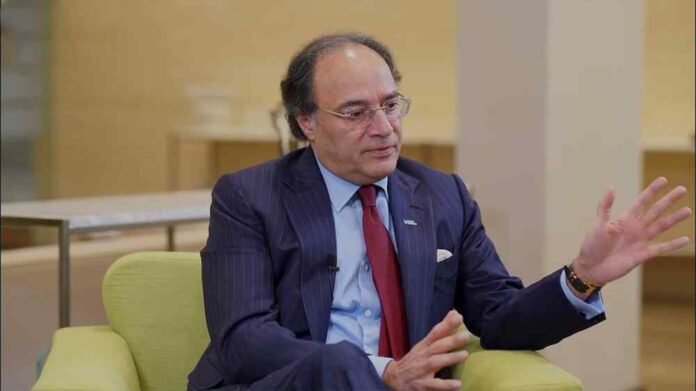Contents
Finance Minister Muhammad Aurangzeb signaled on Wednesday that Pakistan could see another reduction in its key interest rate before the close of 2025, citing improved inflation numbers and stronger economic indicators.
Speaking at an event in Islamabad, Aurangzeb noted that while the State Bank of Pakistan (SBP) has the final say on monetary policy, his personal view is that “there’s still room to bring the rate down.”
The SBP has already slashed its policy rate from 22% in June 2024 to 11% by May this year—spread over seven cuts totaling 1,000 basis points. Since then, the rate has remained unchanged, frustrating segments of the business community that were hoping for further easing.
Aurangzeb argued that both headline and core inflation data support additional reductions, which could help spur private investment and lower financing costs.
Economic Gains and Ratings Upgrades
The finance minister outlined what he described as “strong progress” over the past 18 months: higher GDP and per capita income, falling inflation, an improved current account, a surplus in the external account, and record foreign exchange reserves and remittances.
He also pointed to upgrades in Pakistan’s credit ratings from Fitch and S&P Global this year, adding that he hopes Moody’s will follow suit soon. In July, Aurangzeb had directly urged the agency to improve Pakistan’s Caa2 rating.
Trade Boost and Business Engagement
On the trade front, Aurangzeb highlighted a recent deal with the United States that cut tariffs from 29% to 19%, calling it “regionally competitive.” He emphasized the need for government officials to actively engage with businesses, drawing on his private sector experience: “In India, Delhi goes to Mumbai for consultations—our government should do the same here.”
Sector Performance: Exports, Loans, and Stock Market Surge
Aurangzeb reported double-digit export growth in textiles, IT, and pharmaceuticals. Lending to small and medium enterprises jumped 41% year-on-year, while agricultural loans surpassed Rs2.5 trillion. Private sector borrowing increased by 38%.
Government debt servicing fell by Rs1 trillion last year and could drop by more than that again in 2025. Aurangzeb said fiscal discipline will eventually reduce the state’s reliance on commercial bank borrowing, which hit Rs2.7 trillion by early May.
On capital markets, he noted the Pakistan Stock Exchange’s historic climb past 147,000 points—a 60% rise—with 65,000 new investors joining over the past year. Company registrations also exceeded 250,000 annually, which he described as a “structural shift” in the economy.
Reforms and Rightsizing Drive
The finance minister said the government is pursuing tariff reforms to lower costs for raw materials and intermediate goods, aiming to boost export competitiveness.
He also confirmed that the “rightsizing” of 43 ministries and more than 400 departments is in progress, alongside an acceleration in the privatization of state-owned enterprises. The initial June 30 target for rightsizing has passed, but ministries have been asked to submit restructuring details.


